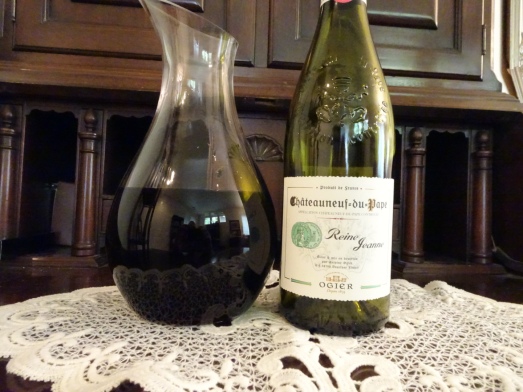In Western Placer County, near where the suburban housing tracts meet the rural farms and ranches, the Loder family has a small parcel of wine grapes. Ron and Kathy Loder are long-time wine lovers. When they were raising their children, they had grassy fields for the kids to play and practice football. Once the kids were grown, Ron and Kathy decided to plant grapes and make their own wine.
Getting started wasn’t as simple as just planting some vines and waiting for them to produce fruit. Ron was serious about wanting to make good wine, so he contacted U.C. Davis; renown for their viticulture program; and asked for help. Ron and Kathy really, really wanted to grow Cabernet Sauvignon – their favorite varietal wines. However, the experts told them that their microclimate and soil were not suitable. Instead, they were advised to grow grapes more suited to the Mediterranean climate here – Barbera and Tempranillo, and interestingly, Cab Sauv’s parent, Cabernet Franc. In all they have about ¾ of an acre of Estate vines, and they also source other varieties from vineyards around Northern California.
A couple of weeks ago, we were invited to visit and experience Ron and Kathy’s production. The group started with appetizers and wine in the Loder family home, and then Ron escorted us out to the vineyard for an educational tour. One of first things I noticed about Ron is his passion for wine growing and winemaking. Ron enthusiastically talked us through the process, from initial plantings, to waiting the three years before the vines produce wine-quality grapes, to harvest, crush, and production. While in the vineyard, he brought out his refractometer, the instrument used to determine the brix (sugar level) in the grape juice, and allowed each of us to have a look.
Ron is also a humble man, relating the story of his efforts to cheat the process and make wine with grapes from two years old vines. It was a complete failure, and they marked the bottles with an “F”. They still have a few bottles, just as a reminder.
After the vineyard tour, we moved on to the fermentation room and cellar. Robyn even had the chance to punch down some recently harvested grapes that were in the fermentation tank! Then, of course, we got to sample more wine.
Loder Vineyards is not a commercial production, but with the quality of their wines, they should be. Touted as “no headache wine”, Ron uses a minimalist approach, with microscopic amounts of sulfites used, and little other intervention. All of the wines spend nearly two years in oak before bottling. Just a few weekends before our visit, they had just bottled their 2016 vintage.

A true “friends and family” production, the Saturday following our visit, they would host their annual harvest and crush party. We were invited, but already had plans to be out of town.

Ron’s vocational background is in commercial building construction. As such, when they first started bottling wine, they used blue painter’s tape as labels; having an ample supply on hand. This tradition continues today, and Ron says if he ever does enter commercial production, his labels will be designed in similar fashion.

All of the wines we tasted were well made and complex. Fruit forward without being jammy, with smooth tannins and balanced acidity and oak influences. We tasted Estate Barbera and Tempranillo, some interesting blends such as Tempranillo-Cabernet Franc (Kent’s favorite) and a Barbera-Cabernet Sauvignon. Yes, Ron and Kathy have made connections in the wine world, and source Cabernet Sauvignon from Lake County, so they can make and drink their beloved favorite. We barrel tasted the 2016 Cabernet Sauvignon, and it is already coming along, with promise to be a fantastic wine!

We were honored to be invited to this event, and consider Ron and Kathy, and all of the other’s there that evening, to be new wine friends.
Cheers!
- Text and photos by Kent Reynolds and Robyn Raphael






















